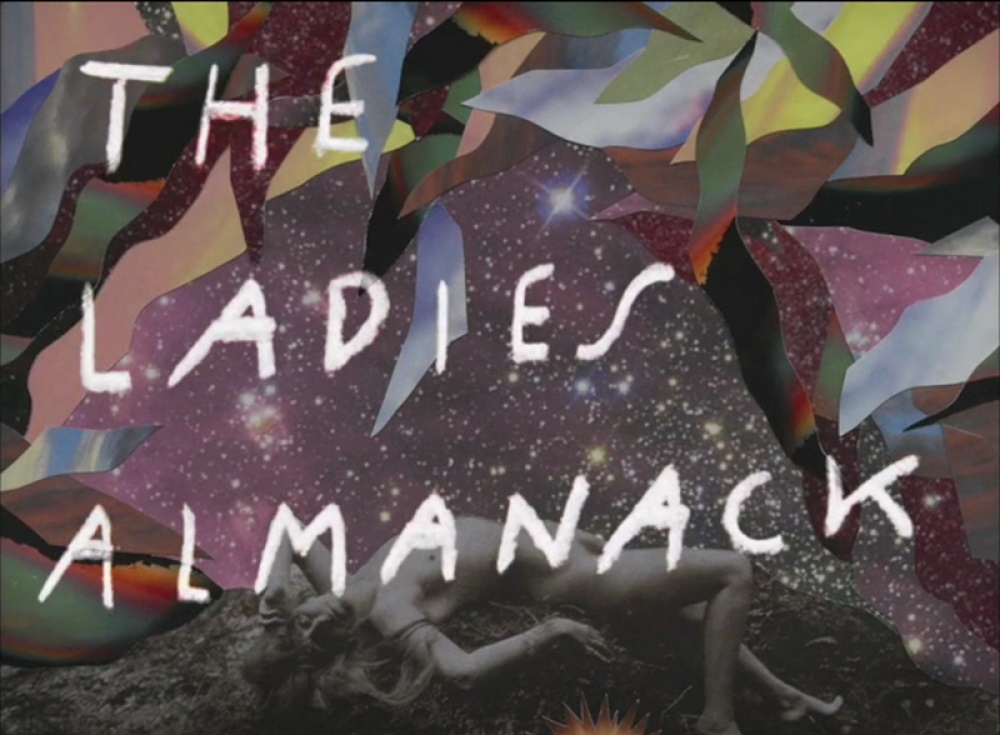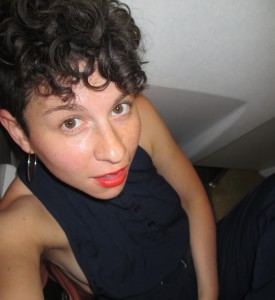This guest post is by Daviel Shy.
The process of adapting The Ladies Almanack for film has been exciting, but in the beginning, it was an incredibly lonely task; a lonely one for a long time. I spent a year and a half of researching and writing before I approached anyone to be in the film, but that time gave the project the backbone it would need in order to grow. Alone I had to discover what this film wanted to be, and the only way to do that was to listen carefully to the voices in the books of women, living and dead.
I started with copious notes and copious daydreaming. At the time, I was the manager for a performance company who was on tour in the UK. Somehow, that tour is secretly written into the script between the lines; the train rides through England and Scotland; the quiet nights in hotel rooms. This is where I found the freedom and quiet to begin to see the film’s scenes crystallize in my head.
One brave task I took on early to ensure the future of the film: I checked with Djuna Barnes’ literary executors early on to be sure I could legally make this film. The answer, luckily, was yes.
Cauleen Smith, an artist I’ve admired for years, could see what a big idea this was from the very beginning. She advised me to learn French for the project, which helped immensely. She was the only person I would occasionally share ideas with before writing them. For example, when I described to her my vision for the film’s final scene, she said, “Film that first, as soon as you can. Do it now; don’t let it get stale.” I followed her advice, and indeed, this scene was shot almost a year before the rest of the film, during my preliminary scouting trip to Paris.
One of the resources I found most useful was Julie Taylor’s chapter on the novel Ladies Almanack in her book, Djuna Barnes and Affective Modernism. Taylor writes: “Having it all is precisely what Barnes’ Ladies Almanack, with its non-compromising, gloriously greedy and accumulative notion of happiness promises the reader.” Her astute analysis gave me permission to bend the rules of storytelling, and the constrictions of no-budget filmmaking to be “gloriously greedy,” myself and attempt to “have it all.”
So I set about not to represent the women whose lives and work inspire me, but to invite these very people into the project themselves. Within another year I’d be sitting face to face with Hélène Cixous, Eileen Myles, or Guinevere Turner. Once I was able to reach someone personally, almost everyone joined the cast immediately, without pay or persuasion. They simply liked the idea. After reading about the project, Cixous said to me on the phone, “I can see what you are trying to do, and it has got to be done perfectly.” Most of the casting happened organically.
There is one exception to my casting luck: for a number of years I have been pen pals with the incredible artist and performer, Vaginal Davis. I cherished her letters stuffed with postcards from art shows, naked women cut from vintage porn catalogues, clippings of interesting art news in German, and other encouraging odds and ends that I’ve pasted onto my studio walls. Initially, I had envisioned her as Gertrude Stein, but she refused the suggestion three times in our letters, finally saying, “No way, baby! I am focusing on art, and do not want to perform in films anymore.” I couldn’t argue with that, but it worked out for the best, because artist Alison Bechdel recommended Terry Castle for the role. Terry owned the role beautifully, and enhanced our production in a different way: her wife Blakey cameos as the perfect Alice B. Tolkas.
Months before casting the role of Radclyffe Hall, I traveled on an Amtrak train to Kansas City, passing Illinois horses and barns. I thought of Deborah Bright’s essay, “Horse Crazy,” which I read and reread in graduate school. Then it clicked! I looked out the window, then wrote:
Reverse dream girls. May 2nd, 2014,
I am riding through Midwestern fields with Deborah Bright. She’s agreed to play Radclyffe Hall in my film, so we take to horseback, heading West. My Aunt lives in New Harmony, Utah, where the red mountains meet the green ones. We could be there by Wednesday.
There has been a certain magic protecting, driving, and following the making of this movie. I don’t necessarily understand it, and I certainly do not control it. I see my role instead as learning to listen to it and ride it, wherever it may lead.
Daviel Shy’s film The Ladies Almanack is now crowdfunding via Seed & Spark.
See also: Seed & Spark: Unearthing Buried Voices in The Ladies Almanack.
Daviel Shy has written and directed nine short films. Her writing has been published by Taylor & Francis (UK) and University of Chicago Press. Her forthcoming chapbook, Grammar Rulse, will be published by Dancing Girl Press in July. The Ladies Almanack is her first feature film. www.davielshy.com


